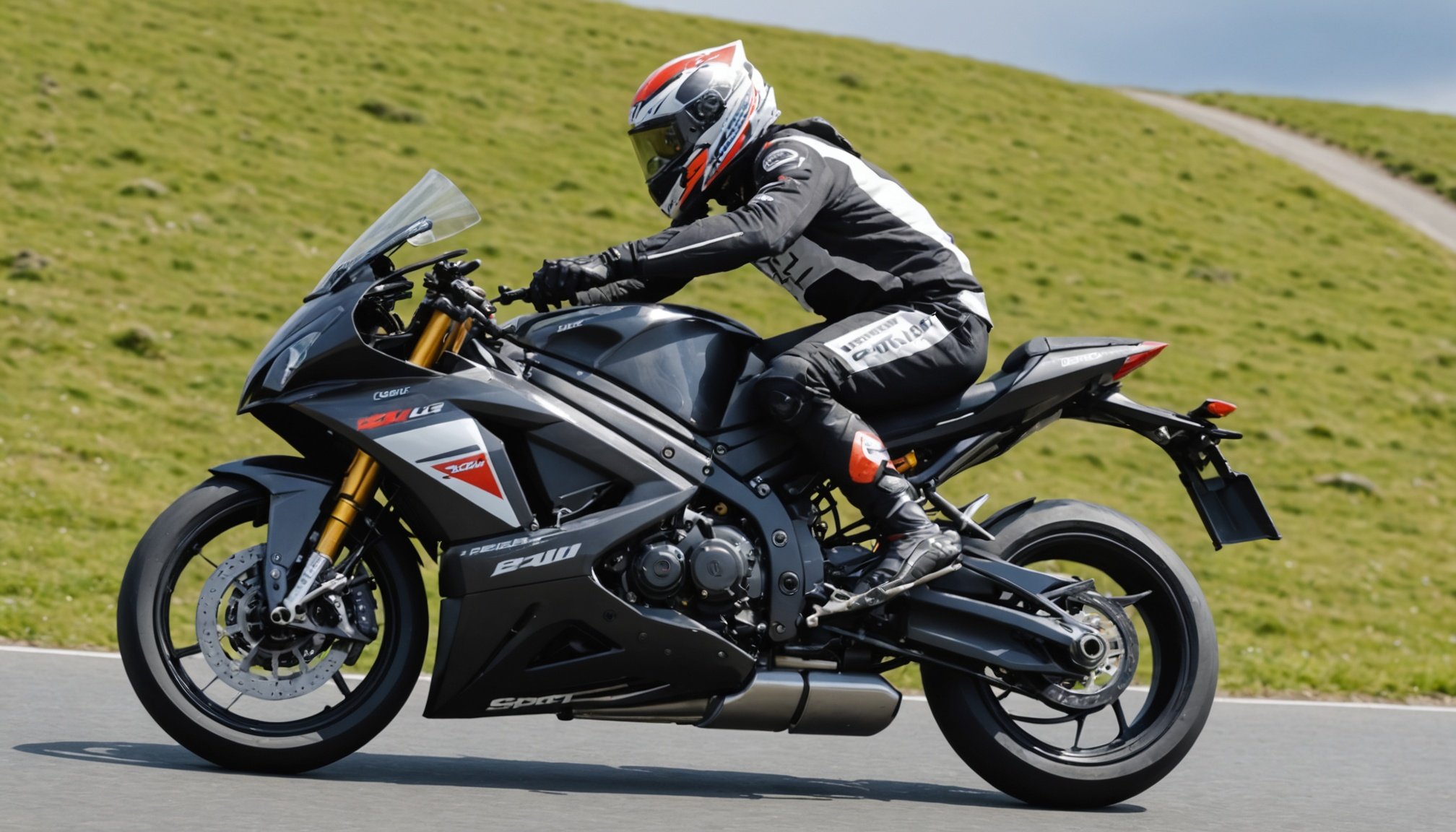Mastering the Art of Sport Bike Setup for Peak Performance in UK Hill Climbs
When it comes to tackling the challenging hill climbs of the UK, having the right bike setup can be the difference between a stellar performance and a grueling struggle. Here’s a comprehensive guide to help you optimize your bike for those demanding ascents.
Understanding Your Bike and the Terrain
Before diving into the specifics of bike setup, it’s crucial to understand both your bike and the terrain you’ll be riding on.
Also read : Discover the ideal electric bike for navigating dubai's lively streets
Knowing Your Bike
For hill climbing, you don’t necessarily need a specialized mountain bike; a well-set-up road bike can be more than sufficient. Bikes like the Specialized Roubaix SL8 Sport 105, with its built-in Future Shock suspension, can offer a comfortable and efficient ride even on rough terrain[1].
| Bike Model | Key Features | Price |
|
|------------------------------------------------------------------------------|
|
| Specialized Roubaix SL8 Sport 105 | Future Shock suspension, Shimano 105 groupset, 32mm Specialized S-Works Mondo tyres | £3,000 / $3,500 / €3,800 |
| Canyon Endurace CF SLX 8 Di2 Aero | Aero elements, Ultegra Di2 groupset, width-adjustable Aerocockpit | £4,999 / $5,699 / €5,199 |
| BH RS1 5.0 | Aerodynamic frame, Ultegra 12-speed groupset, 40mm deep Vision carbon wheels | £5,799 / €5,999 |
Familiarizing Yourself with the Terrain
UK hill climbs can vary significantly, from the short, steep inclines of Bank Road in Matlock to longer, more gradual climbs. Understanding the terrain is key to tailoring your training and bike setup.
Topic to read : Find your perfect electric bike for dubai's vibrant streets
“For short climbs like Bank Road, you can get away with less base training, but longer climbs require a solid foundation of endurance and strength,” notes a cyclist who has participated in several national hill climb championships[2].
Training and Conditioning
Training is an integral part of preparing for hill climbs, and it goes beyond just riding your bike.
Long Rides and Endurance Training
Building endurance is crucial for tackling long hill climbs. Incorporate one long ride per week into your training schedule, gradually increasing the distance over time. This helps your body adapt to sustained periods of riding and improves your overall fitness[4].
Interval Training and Hill Repeats
High-intensity interval training (HIIT) and hill repeats are essential for improving your climbing strength and power output. Hill repeats involve riding up a hill at maximum effort, then recovering by riding back down. This type of training mimics the race’s elevation profile and helps you build the specific strength needed for climbing hills[4].
### Sample Training Plan
- **Monday:** Rest day or easy recovery ride
- **Tuesday:** Interval training (HIIT)
- Warm-up: 10-15 minutes easy ride
- High-intensity intervals: 5-10 minutes at maximum effort, followed by 5 minutes recovery
- Cool-down: 10-15 minutes easy ride
- **Wednesday:** Strength and conditioning (focus on legs, core, and upper body)
- **Thursday:** Hill repeats
- Warm-up: 10-15 minutes easy ride
- Climb a hill at maximum effort, recover by riding back down
- Repeat for 3-5 sets
- Cool-down: 10-15 minutes easy ride
- **Friday:** Rest day or easy recovery ride
- **Saturday:** Long ride (gradually increase distance over time)
- **Sunday:** Rest day or easy recovery ride
Bike Setup for Hill Climbing
The right bike setup can significantly enhance your performance on hill climbs.
Gear Ratios
Having the right gear ratios is critical for hill climbing. A bike with a wide range of gears, such as the BH RS1 5.0 with its 52/36t Ultegra 12-speed groupset and 11-34t cassette, can help you tackle steep inclines with ease. The Shimano Di2 GRX815 groupset on the Cannondale Synapse LTD RLE, with its low-range gearing, is also ideal for climbing[1].
### Gear Ratio Tips
- **Use a compact or semi-compact chainring:** This provides lower gearing for easier climbing.
- **Choose a wide-range cassette:** An 11-34t or 11-36t cassette offers a broad range of gears to help you tackle varying inclines.
- **Consider a single-chainring setup:** This can simplify gear shifting and reduce weight, but ensure you have the right range of gears.
Tyre Selection
Tyres play a crucial role in both comfort and performance. For hill climbing, you want tyres that offer a balance between grip, comfort, and efficiency. The Specialized S-Works Mondo tyres on the Roubaix SL8 Sport 105, which measure closer to 34mm when inflated, are an excellent choice for their comfort and grip on various surfaces[1].
Bike Fit and Ergonomics
A proper bike fit is essential for efficient riding and preventing injury. Ensure your saddle height, handlebar position, and pedal cleats are adjusted correctly to maintain a comfortable riding position.
“Getting the right bike fit can make a huge difference in your performance and comfort. It’s worth investing in a professional bike fit session,” advises a cycling coach[5].
Mental Preparation and Race Strategy
Mental preparation is just as important as physical training when it comes to hill climbing.
Visualizing Success
Visualize yourself riding strong, especially during challenging sections of the climb. This can boost your confidence and help you stay focused.
“Visualizing the race route and imagining yourself riding strong can really help on race day. It’s about mental toughness and believing in your training,” says a seasoned hill climb competitor[4].
Breaking Down the Climb
Break down challenging climbs into small, manageable sections. This can help you maintain a positive attitude and conserve energy.
“Instead of looking at the climb as a whole, break it down into smaller sections. Focus on one section at a time, and take it one pedal stroke at a time,” advises a cycling coach[4].
Race Day Strategy
Plan your race strategy carefully. Start with a steady pace and gradually increase your effort as you climb. Make sure to refuel and hydrate appropriately to maintain your energy levels.
“On race day, it’s about pacing yourself correctly. Start steady, and then give it your all in the final third of the climb. Make sure you’ve fueled and hydrated properly to avoid hitting the wall,” says a hill climb champion[4].
Practical Tips for Hill Climbing
Here are some practical tips to help you improve your hill climbing performance:
Seated vs. Standing
Know when to stand and when to sit. Standing can help you generate more power, but it also increases your heart rate. Use seated climbing for longer, more gradual inclines and stand for shorter, steeper sections.
“Standing can be beneficial for short, steep climbs, but for longer climbs, it’s often better to stay seated and maintain a steady rhythm,” advises a cycling expert[4].
Power Output and Heart Rate
Monitor your power output and heart rate to ensure you’re riding within your limits. This can help you avoid burning out too early in the climb.
“Using a power meter and heart rate monitor can help you gauge your effort and pace yourself better. It’s about finding that sweet spot where you’re pushing hard but not overdoing it,” says a professional cyclist[4].
Mastering the art of sport bike setup for peak performance in UK hill climbs involves a combination of the right bike, thorough training, and mental preparation. By understanding your bike, tailoring your training to the terrain, optimizing your bike setup, and preparing mentally, you can significantly improve your performance on those challenging hills.
As one hill climb enthusiast puts it, “It’s not just about the bike; it’s about the rider. With the right setup and training, you can conquer even the toughest hills and enjoy the ride like never before.” So, get out there, train hard, and enjoy the thrill of climbing those UK hills.













